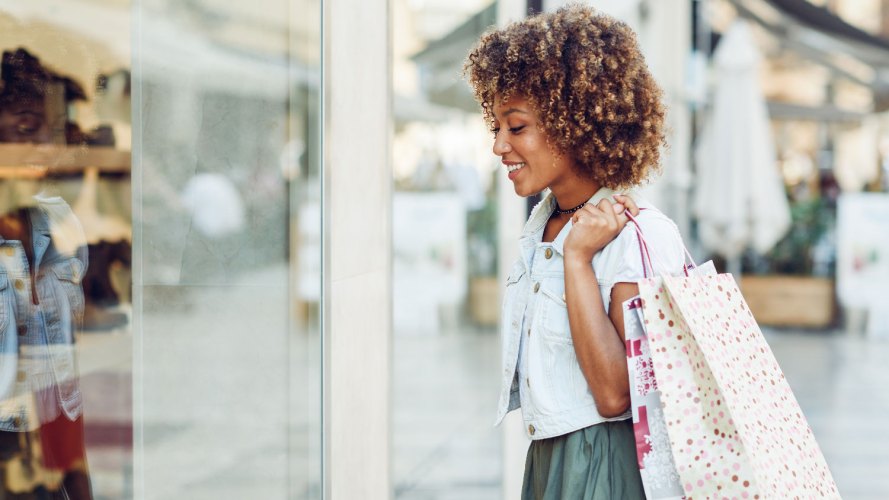Seventy-five percent of US consumers are trying new shopping behaviors due to economic pressures, store closings, and changing priorities. They are experimenting with different brands, services, sites, and more. Of those who have tried a new brand, 73% intend to continue with them. This is customer loyalty.
During 2020 and now in 2021, customers were motivated to become digital first in many aspects of their lives, work, learning, healthcare, banking, and especially, shopping. This accelerated customer empowerment by unlocking the power of choice, convenience, and efficiency in new ways for many customers. Their eyes were opened to a world of infinite possibility and with it, fresh takes on customer engagement, experiences, and ultimately, loyalty. An effective customer loyalty strategy is more critical than ever for brands to not only retain customers, but to affect their overall experience. Everything starts with understanding what customers value and that takes knowing their preferences and expectations and also exploring innovative approaches to loyalty, even if those examples are outside of your industry.
What does it take to earn customer loyalty in retail today?
Loyalty transcends products and services: It creates an emotional connection between customers and the brand — one in which customers feel seen and heard.



At the heart of customer loyalty is engagement. And each engagement adds up to how the customer sees, thinks, and feels about your brand. It’s personal. That sentiment is the foundation for relationships and loyalty. Essentially, loyalty programs are an instrumental part of nurturing relationships. With evolutions in digital engagement platforms, AI, and automation, marketers have unprecedented ability to scale personalization and loyalty. Customer loyalty means someone has done something so profound and meaningful that a customer gifts you with their attention, and more so, their intention. As a result, they’ll go out of their way for that source because it has a profound impact on their life.
Organizations need to think about what they do to earn that response. Then they can build upon that in the context of customer experience. That level of customer loyalty and gratitude is something you must earn. It doesn’t come from a simple transaction.
Earning a free cup of coffee is just a transaction. Customers don’t really think about it. Great experiences, even small ones, make an impact. The true definition of customer experience is the sum of all their interactions. It starts with how businesses earn attention. That leads to the first sale. It culminates with repeat business because they enjoy the experience. The currency of the relationship is the community you build with customers. The byproduct is the free cup of coffee. It’s a change in the dynamic of how you approach your customer loyalty strategy.
Values and emotion are more important than ever for businesses
People became philosophical when the world shut down resulting in a world-war-level transformation. Rethinking what’s important to us, values became part of the buying decision. Customers want to do business with companies that align with their beliefs. They’re paying attention like never before. Thirty-one percent of customers trust a company less because of their response to the pandemic. In fact, 61% have stopped doing business with a company whose values don’t align with theirs.
Emotional reaction to a moment is the heart of any experience. Making customers feel like you care and value them is the most important pillar in loyalty. This, not points or transactions, fosters reciprocity which is the foundation of loyalty. For example, during the pandemic lockdown, AAA Carolinas used their database to identify older, single members. They reached out to them to see if they needed anything. They brought groceries and other necessities to those that couldn’t get them. People will remember experiences that are terrible or if it’s great. They forget anything in between. Acting on what their members needed built an emotional bond. That will always impact their decisions when it’s time to renew.
Humanity through technology
As companies continue to add technology to their processes, they need to think through how they use it to build relationships. Even in digital transformations, humanity needs to remain central to their strategies. Businesses added interactive voice response (IVR) systems to make call center reps more productive. They thought it would make the call experience better for customers too. But, the technology took humanity out of the process. How many times do you keep hitting “0” to try to get to a real person? Businesses need to make sure they don’t create the same experiences with automation or chatbots.
Touchpoints are important. Humans need interaction with other humans. It’s very evocative. It can produce a good or bad response. Businesses need to think through what and where those touchpoints are and how they impact the customer. That comes from understanding your customers and what they are trying to do at that moment. Reaching out with proactive help before they know they need it will delight them.
You have to be thoughtful about human-centered design and their experience. Understand what people value in the moment of engagement. Take insights from the technology people use every day. Smartphones help people pass time while they’re waiting. How do you take a Snapchat or Instagram experience and apply that to your business? How do you stitch together experiences people love to build loyalty? These become enhancements to an incredible relationship because it’s intentional.
As companies adjust to changing circumstances and now emerge from the pandemic, they’re able to reimagine the future. Many are on a different path than they were before. Use the space and time to think about what your customers need now and going forward. Build (or rebuild) those relationships through experiences that delight them in ways you didn’t in the past.
The Retailer’s Guide to Customer Loyalty
Learn how to build stronger relationships and increase customer lifetime value with retail loyalty programs.































